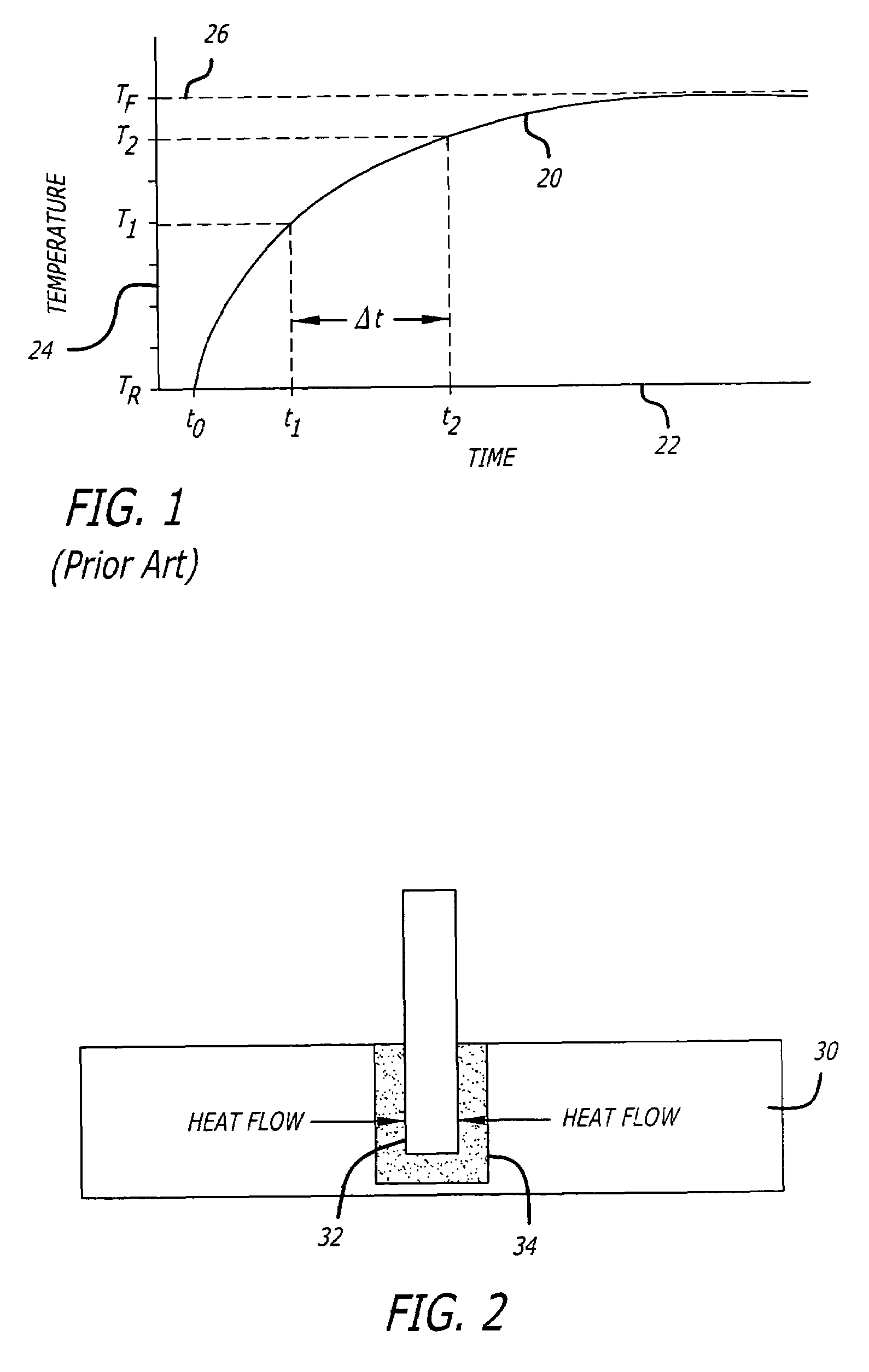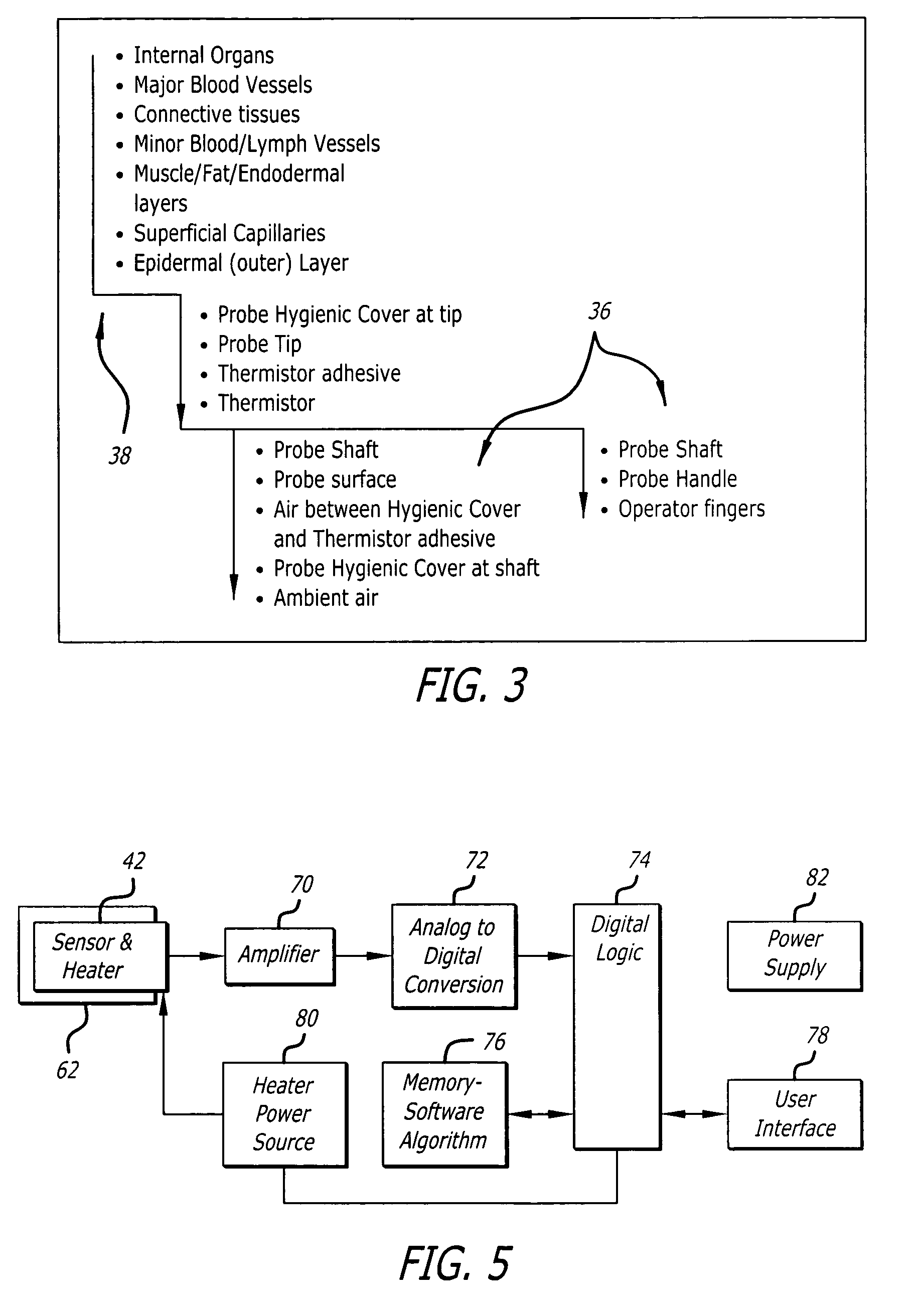Temperature prediction system and method
a technology of temperature prediction and thermometer, applied in the field of electronic predictive thermometers, can solve the problems of affecting the accuracy of the thermometer, the inability to accurately predict the temperature of the body, so as to achieve the effect of reducing the time for data acquisition and data processing
- Summary
- Abstract
- Description
- Claims
- Application Information
AI Technical Summary
Benefits of technology
Problems solved by technology
Method used
Image
Examples
Embodiment Construction
[0057]In the following description, like reference numerals will be used to refer to like or corresponding elements in the different figures of the drawings. Referring now to the drawings, and particularly to FIG. 4, there is shown one embodiment of an electronic thermometer 40 incorporating novel features of the present invention. The electronic thermometer contains a probe 42 for sensing the temperature of a selected part of the patient's body, connected by conductors 44 to the main body 46 of the thermometer. The probe has been removed from a storage well 48 in the main body. The main body of the thermometer contains the electrical components and power supply of the thermometer, and also has a display 50 for displaying temperature values and error or alarm messages, and a first input device 52, which in this case, is an on / off switch located below the display. A MODE switch 54 is also provided at the front panel 56 of the main body to select the site and method of processing the ...
PUM
| Property | Measurement | Unit |
|---|---|---|
| contact temperature | aaaaa | aaaaa |
| temperature | aaaaa | aaaaa |
| temperature | aaaaa | aaaaa |
Abstract
Description
Claims
Application Information
 Login to View More
Login to View More - R&D
- Intellectual Property
- Life Sciences
- Materials
- Tech Scout
- Unparalleled Data Quality
- Higher Quality Content
- 60% Fewer Hallucinations
Browse by: Latest US Patents, China's latest patents, Technical Efficacy Thesaurus, Application Domain, Technology Topic, Popular Technical Reports.
© 2025 PatSnap. All rights reserved.Legal|Privacy policy|Modern Slavery Act Transparency Statement|Sitemap|About US| Contact US: help@patsnap.com



